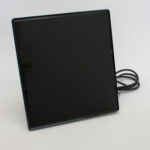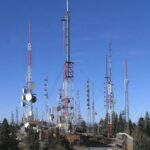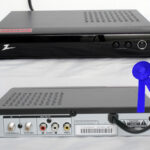Let me start by first saying that a HDTV antenna is no different from a regular TV antenna. It’s all a marketing hype to try to sell TV antennas with a new label. There is one difference between a HD signal and an analog signal (TV broadcast today). With regular TV broadcast, a weak signal will result in a snowy picture; with HD broadcast it you will receive no picture. Unless you have a good antenna you will not receive HD stations that use to be a weak signal on your old TV. This also applies if you are using a TV converter box. Ninety percent of all HD programming will be on UHF channels.
Step1:
If you have good reception on your UHF/VHF channels today, then you will most likely not have to change your TV antenna. You should receive good HD broadcast on your HDTV or converter box.
Step2:
If you receive a few VHF/UHF channels you will need to invest in a good roof mounted TV antenna for VHF/UHF broadcast. Goto: http://antennaweb.org/aw/welcome.aspx and select “Choose an Antenna”. The only info required is your zip code and answering two questions.
Step3:
The next screen will show you a map of your area. If the map is correct, select continue.
Step4:
On the next screen you will see a list of TV stations, their compass heading, and approximate mileage from your home. There is a lot of information on this page that will help you determine how big of an antenna you need to buy.
Step5:
Aiming your antenna will determine what TV stations you will receive. If there is TV stations in the opposite direction of where your antenna is pointing to you will not receive them.
Step6:
To receive TV stations from all directions you have two choices: (1) Purchase an antenna rotor so that you will be able to change the direction of your antenna from within you house. (2) Purchase an omni-directional TV antenna that allows you to receive TV stations from all directions.
Step7:
When at all possible use a directional TV antenna with a rotor over an omni-directional antenna. A directional TV antenna offers better signal gain over an omni-directional antenna. What this means is that you can purchase a directional TV antenna to pull in stations 50, 100, 150 or 200 miles away from your home. The larger the antenna the more powerful it will be. This is why the antenna chart is so important and will help you determine the size of the antenna you need to purchase.
Step8:
If you have limited space and a directional TV antenna is not a choice, then install an omni-antenna. If you need a signal boost you can purchase an antenna amplifier designed for VHF/UHF reception.
Step9:
Whenever install a TV antenna always use RG6 coax cable. This is a heavy shielded cable with minimum signal loss. DO NOT purchase RG59 coax cable. This cable should not be used for HDTV reception.




